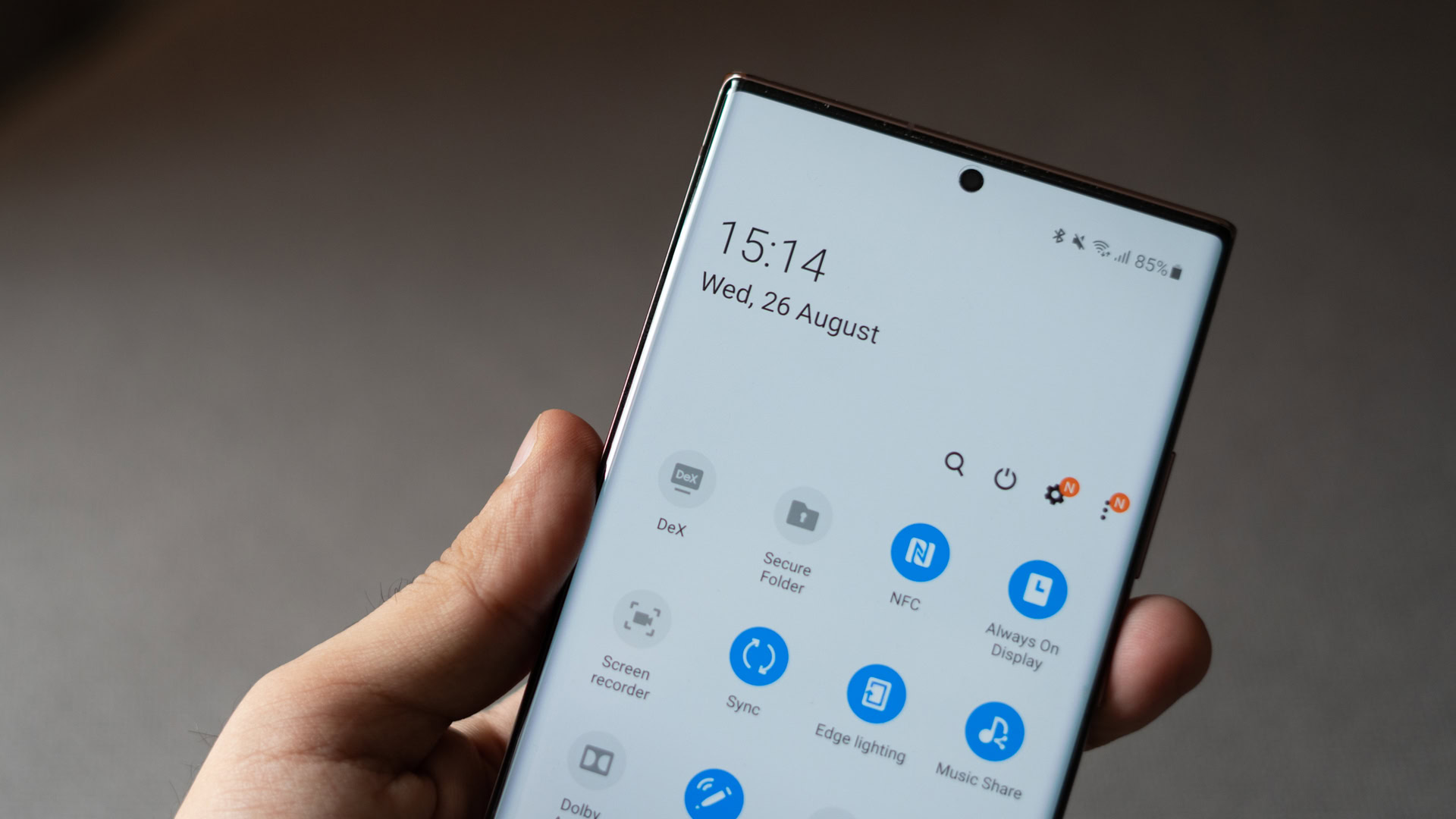Affiliate links on Android Authority may earn us a commission. Learn more.
Samsung Galaxy Note 20 buyer’s guide: Everything you need to know
Samsung announces its flagship Note devices each August, and the latest series consists of the Galaxy Note 20 Ultra and Galaxy Note 20. Together, the Samsung Galaxy Note 20 series offers refined hardware, more productive software, and powerful specs.
Is one of the new Note phones for you? That’s what this buyer’s guide is for. It contains all the best resources on Samsung’s flagship phones to help you make your purchase decision. We’ll look at how well the cameras perform, what various reviewers think of the phones, where to buy them, how much they cost, and much more.
Editor’s Note: This Galaxy Note 20 buyer’s guide is current as of December 2021. We will update it with new content regularly.
Samsung Galaxy Note 20 and 20 Ultra at a glance
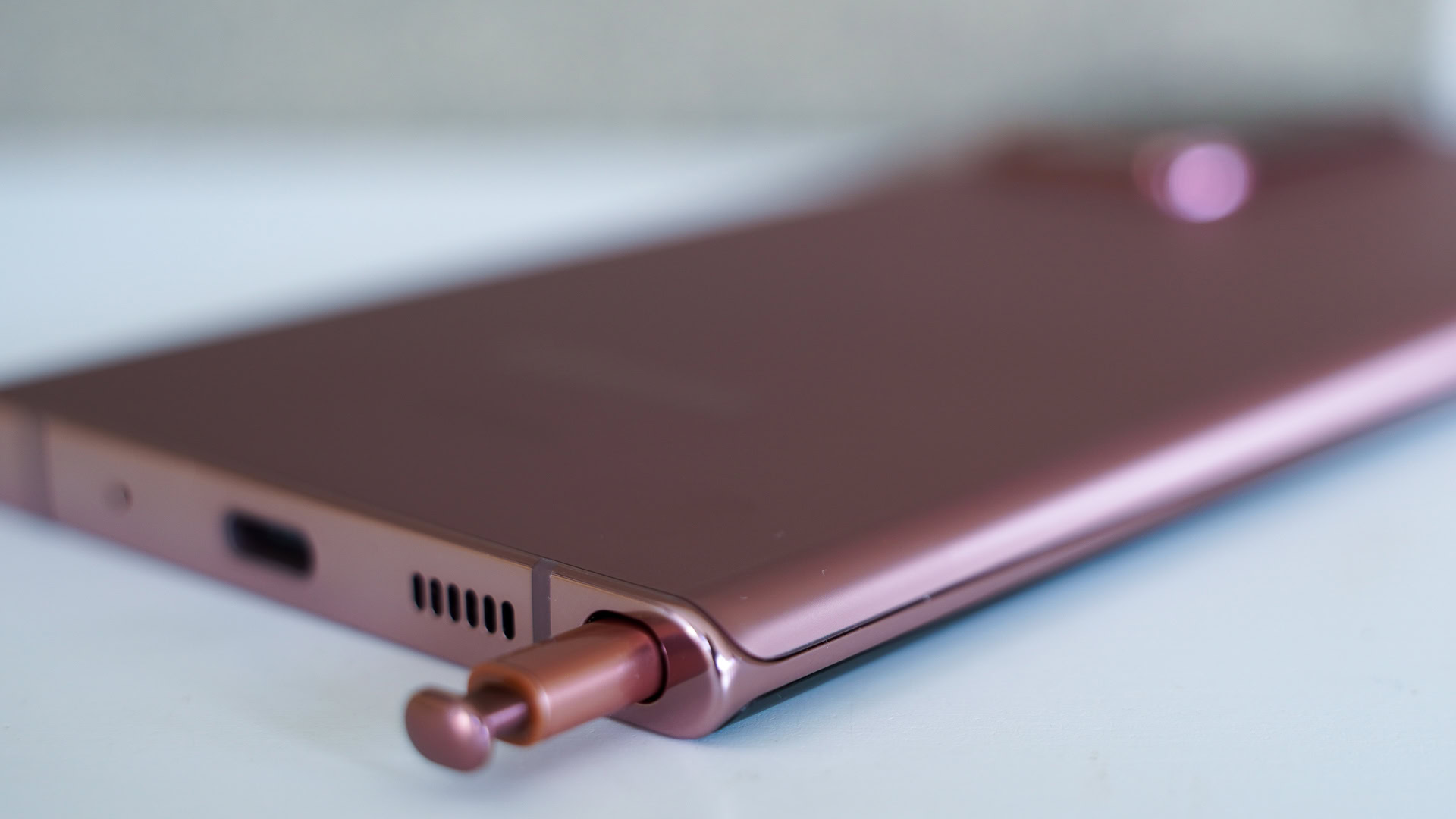
The Galaxy Note 20 Ultra and Note 20 were announced on August 5, 2020, at Samsung’s online Unpacked event. The two phones went up for pre-order a day later, with the Galaxy Note 20 release date set for August 21.
The Galaxy Note 20 Ultra (launch price: $1,299 in the US) is the best phone in the series, offering just about everything you’d want from a phone. It comes with a massive 6.9-inch WQHD+ display that’s curved on the sides, the latest Snapdragon 865 Plus or Exynos 990 processor (depending on the region), and a 4,500mAh battery. It’s made of metal and glass and supports expandable storage.
The Galaxy Note 20 (launch price: $999 in the US) isn’t just a smaller version of the Ultra, as it offers less in many areas. The phone features a smaller flat 6.7-inch display that’s flat and has a lower resolution and refresh rate. It doesn’t support expandable storage and is made of glasstic, which is Samsung’s name for glossy plastic. The phone also doesn’t have a microSD card slot, comes with weaker cameras, and sports a smaller 4,300mAh battery.
Are the Galaxy Note 20 phones worth buying?
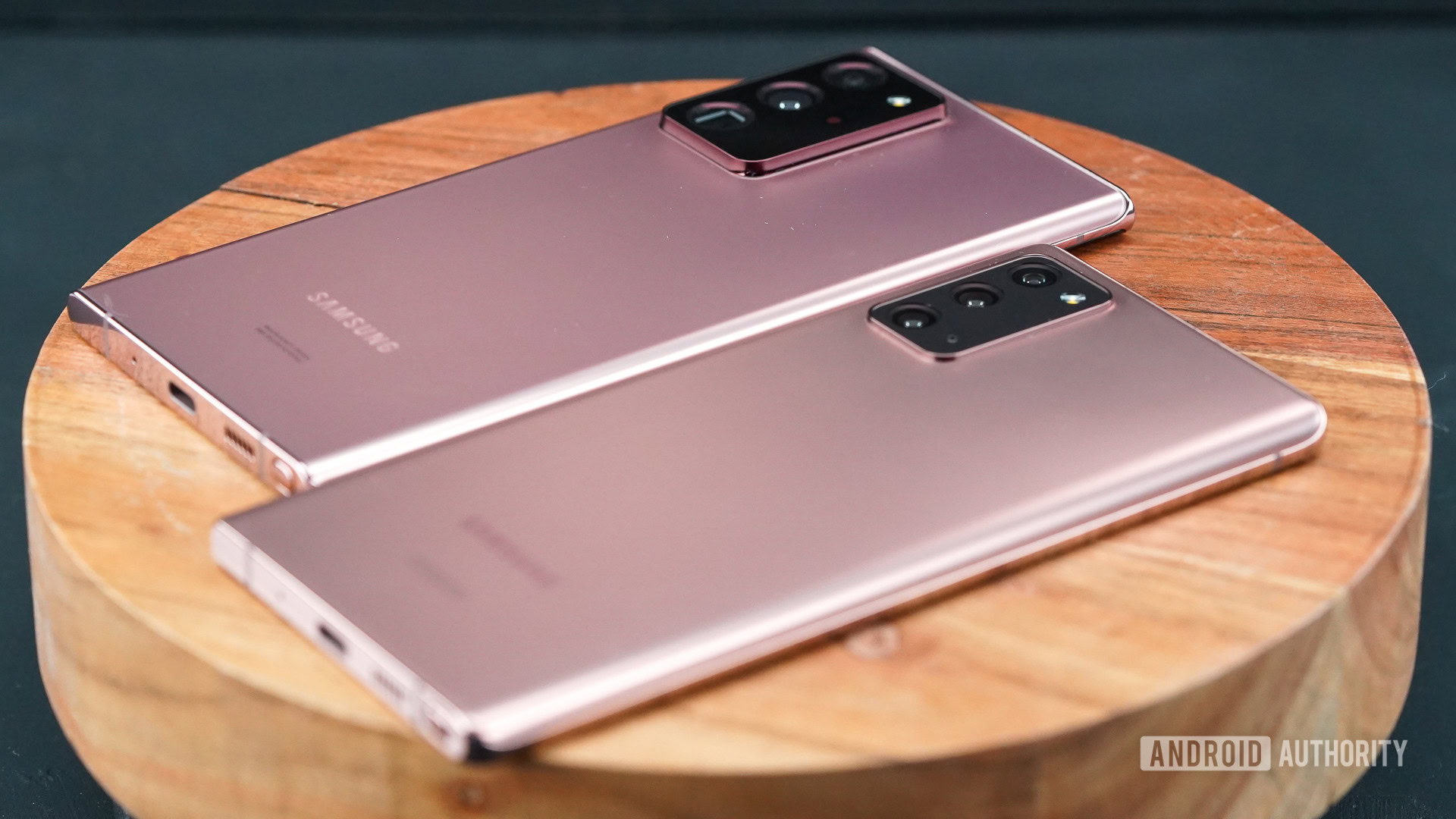
It depends on what you want from a device, and which device you currently have. The Note 20 Ultra is without a doubt a great and powerful phone, but it’s also expensive. The thing that sets it apart from the rest is the S Pen, so if you see a lot of value in that, the Ultra may be for you. Except if you already have last year’s Galaxy Note 10 Plus. In this case, there’s little reason to upgrade.
Also keep in mind that the Galaxy Note 20 Ultra is a massive phone, which can either be a good or a bad thing depending on your preference. Bigger is better when playing games, watching videos, and browsing the web. But for one-handed use and trying to fit the phone in the pocket of your jeans, the large footprint becomes a problem.
Also read: Should the Galaxy Note 20 Ultra be the last Galaxy Note?
So if you don’t mind the colossal size, love the S Pen, don’t own the Galaxy Note 10 Plus, and are willing to part ways with at least $1,299, the Note 20 Ultra is worth getting. But if the S Pen isn’t a priority and you want to save some money, there are plenty of better alternatives out there. These include the cheaper Galaxy S20 Plus, OnePlus 8 Pro, and even the LG V60 ThinQ. There are several other (newer) options available as well, which we take a closer look at in the Alternatives section.
We’re not as enthused about the Note 20. Samsung says it wants to offer the Note experience to those who prefer smaller phones, but the watered-down specs are disappointing, as is the plastic rear panel. With such a high price tag, it just isn’t a good deal. Despite the even higher price tag, we definitely recommend the Ultra over the regular Note 20.
Also keep in mind that Samsung did not release a new Note series this year, so the Note 20 devices are the latest phones from Samsung featuring a stylus that comes in the box. The latest Galaxy Z Fold 3 also works with a stylus, but you have to buy it separately.
What experts think of the Galaxy Note 20 phones
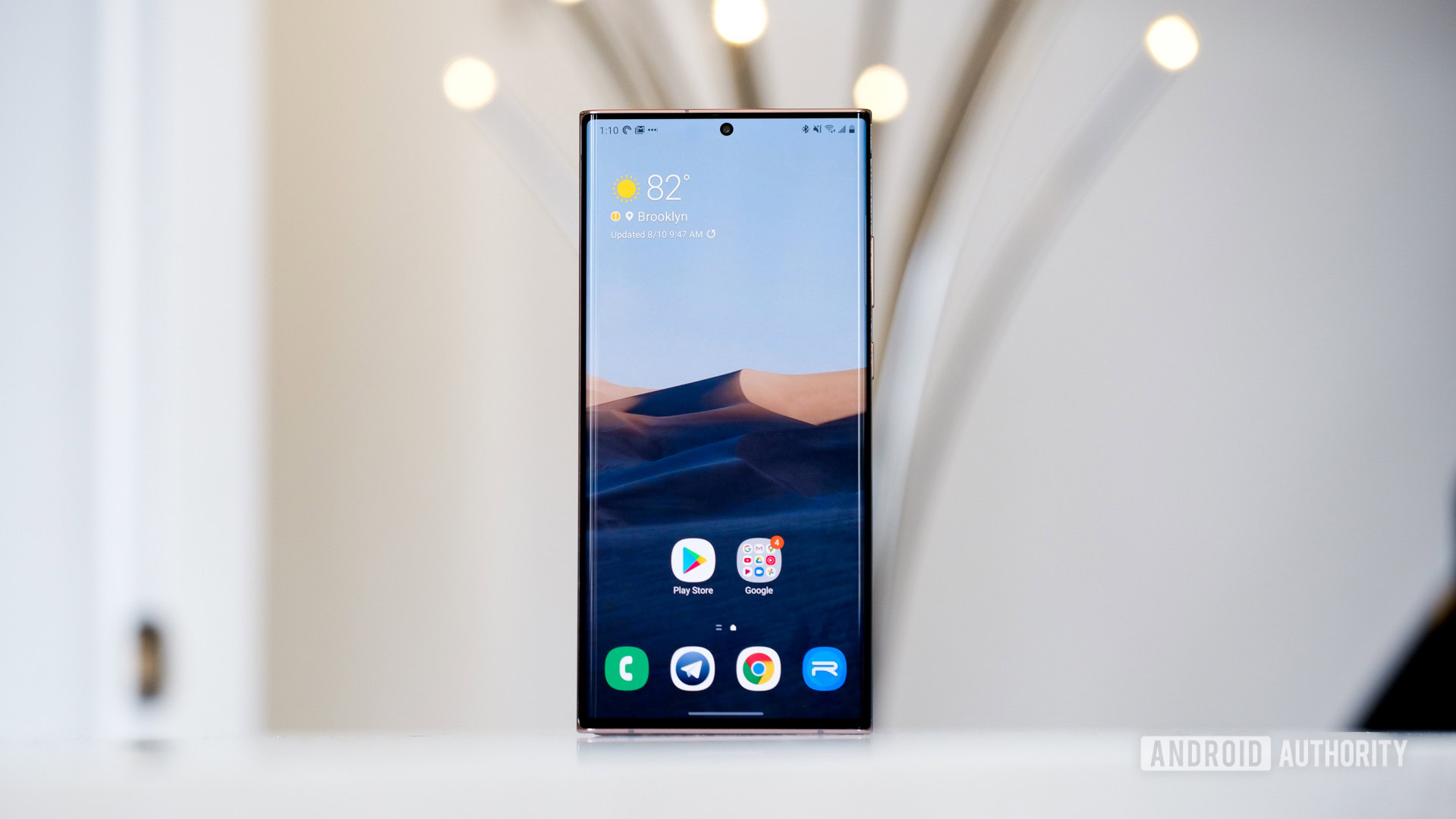
Our very own David Imel reviewed the Galaxy Note 20 Ultra and had a lot of good things to say about it. He liked the performance of the phone, which can handle just about anything you throw at it. The build quality got a thumbs-up from David as well, as did the S-Pen and all the tricks it can do.
David also liked the camera setup of the phone. Most people will be happy with it, although it isn’t class-leading — the Pixel 4 and Pixel 5 are still better, in David’s opinion. Other highlights worth mentioning include Dex that is now wirelessly enabled, allowing you to cast your screen to a TV or monitor. Then there’s the solid display and a guarantee of three major Android OS updates.
David also pointed out a few drawbacks of the Note 20 Ultra. A big one is that the phone gets hot, even with basic tasks like taking photos. It’s not too hot to hold, but you’ll definitely notice.
The battery life is average at best. It will get you through the day, but David expected more given the price tag of the phone. The capacity comes in at 4,500mAh, making it slightly bigger than that of the Galaxy Note 10 Plus (4,300mAh) but smaller than the one found in the S20 Ultra (5,000mAh).
The Galaxy Note 20 Ultra is a massive phone.
Then there’s the size. The phone is gigantic with its 6.9-inch display. Many will find it too big for everyday use, as fitting it into a pocket can be challenging, as is trying to use it with just one hand. But on the other hand, some may like the large display because it’s great for watching videos and playing games. It all comes down to what you value more — portability or screen real estate.
In our regular Galaxy Note 20 review, Oliver Cragg was unimpressed with what Samsung had to offer. Setting aside the fact that it’s a $1,000 phone with a plastic back, there are just too many drawbacks to recommend buying it. There’s a 60fps 1080p screen, a lack of expandable storage, and it gets hot when under stress. After using it, it’s still not clear what exactly Samsung was thinking of releasing this phone at this price. For a few hundred dollars more, the Note 20 Ultra will scratch your premium flagship itch much better.
What other reviewers from around the web think
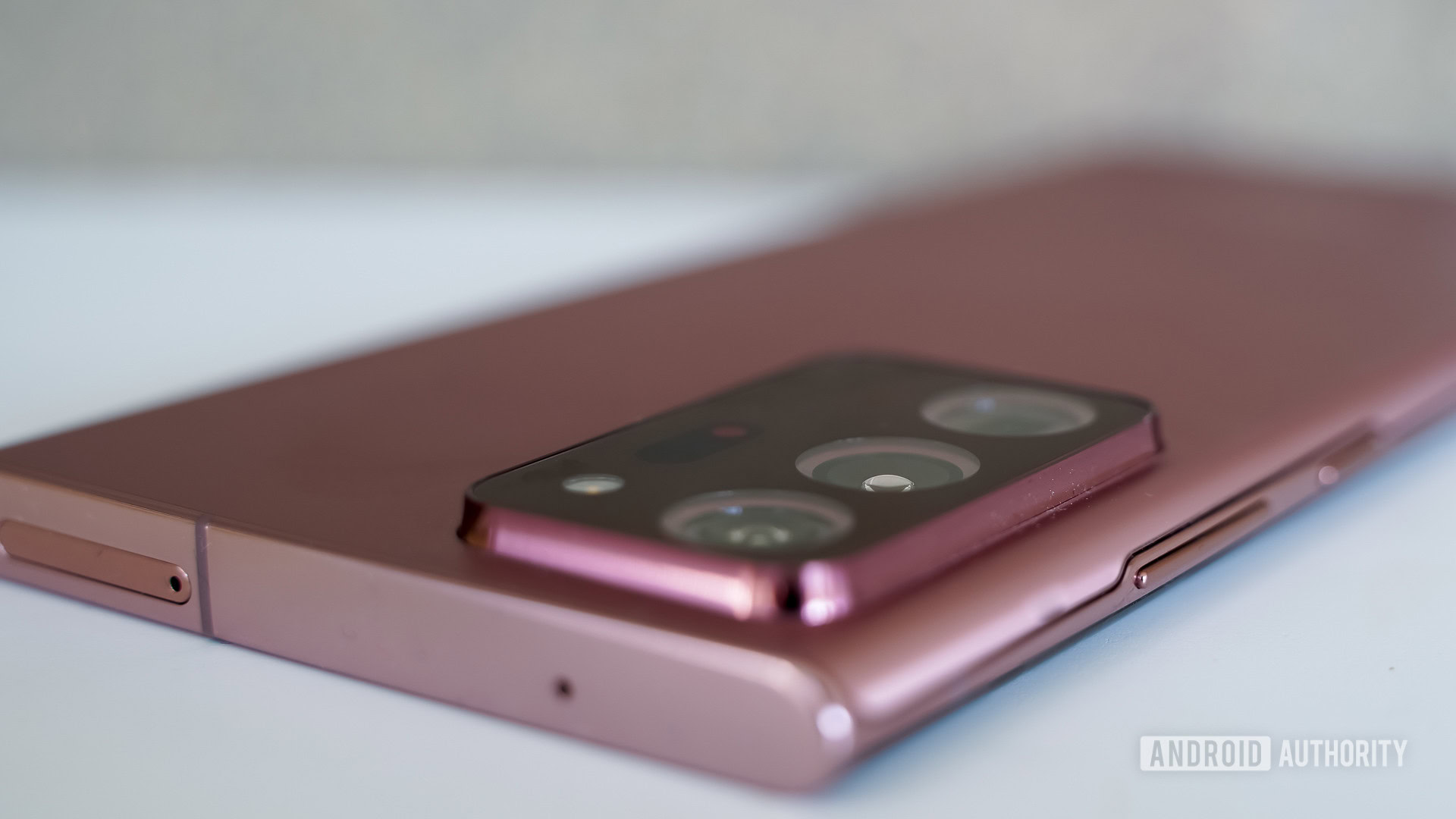
To give you the best overview of Samsung’s flagship series, we looked at what reviewers from other publications had to say about the Galaxy Note 20 and Note 20 Ultra.
- Tech YouTuber MKBHD called the Note 20 a weird phone. Although it has great performance and decent cameras, the $1,000 price tag is too high, especially when considering that the phone has a 60Hz display, lacks expandable storage, and has a plastic back. He doesn’t recommend the phone to most people, except those who really want an S Pen and don’t have the cash to spend on the larger Ultra model.
- The Verge’s Dieter Bohn was impressed with the battery life of the Galaxy Note 20 Ultra, which regularly got him through two days of use. He also loved the phone’s rear cameras, which are on par with the best ones out there. Other pros of the phone include great performance and the S Pen that pairs wonderfully with Samsung’s Notes app. Dieter also highlighted a few drawbacks of the handset, which include the selfie camera that over smooth faces, a high price tag, and too much bloatware. Then there’s the massive size, as well as the gigantic camera bump.
- Tech Radar’s Matt Swider took the Galaxy Note 20 Ultra for a spin and loved many things about it. He said it has the best cameras you can currently get on an Android phone, as well as the best display. The S Pen got a thumbs-up from him as well, as it comes with additional features that make it more useful than ever. But the phone is too expensive in Matt’s opinion and only comes with 25-watt charging, which is slower compared to the 45-watt charging of last year’s Note 10 Plus. Matt’s colleague James Peckham spent some time with the regular Note 20 and was happy with the performance and the cameras. However, he wasn’t impressed with the flat display sporting just a Full HD+ resolution and a 60Hz refresh rate.
What people like you think of the Galaxy Note 20 phones?
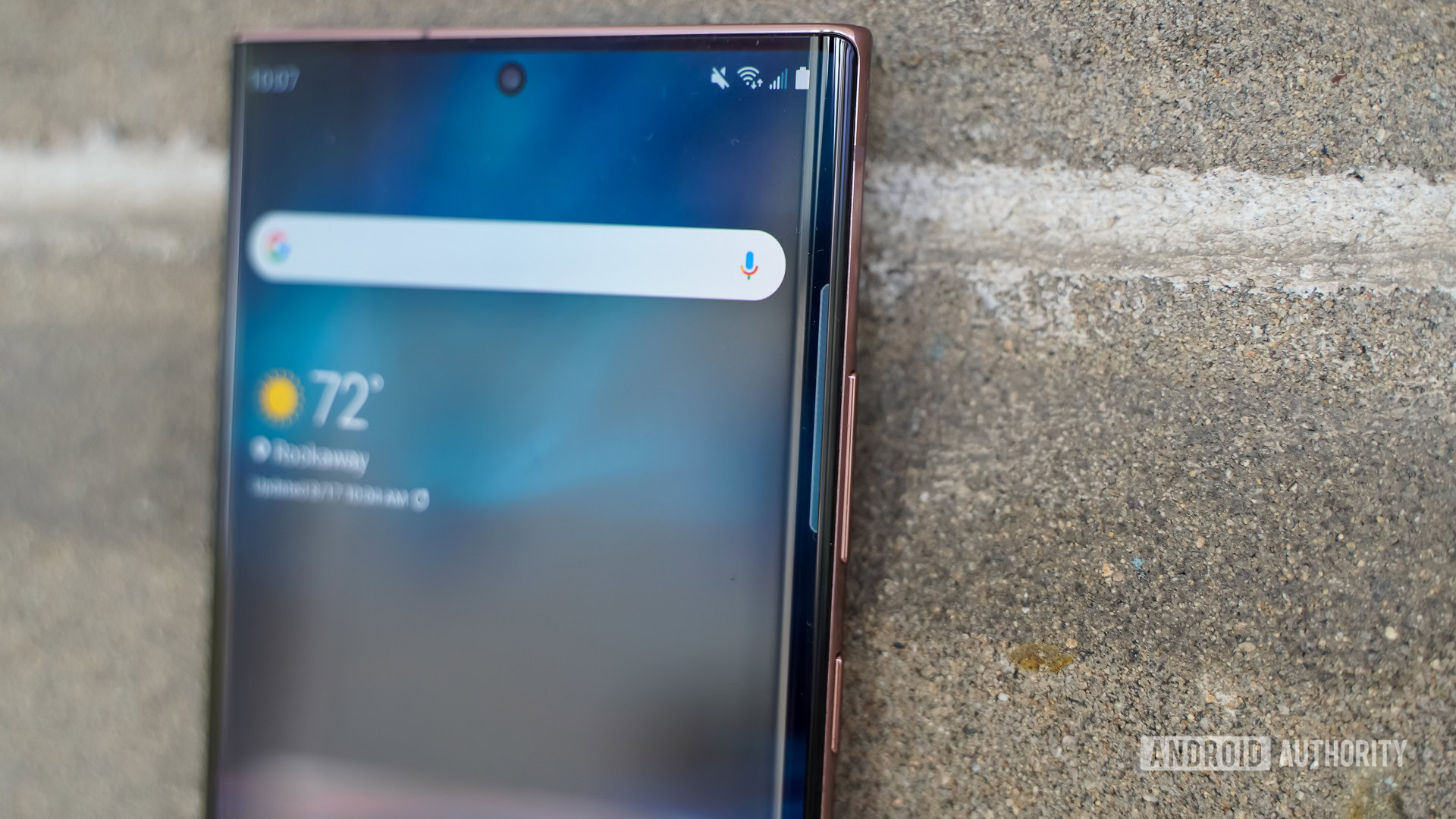
We ran a few polls on our website during the last few weeks that give us insight into what users think of the Galaxy Note 20 and 20 Ultra.
We published the first one in July of 2020, before the Note 20 was released. We wanted to know whether or not readers would buy a Galaxy Note 20 if it had an Exynos 990 chipset, which is generally considered to be less powerful than its Snapdragon counterpart. The results were quite close, with around 27% of participants saying they would get the Exynos version of the Note, while 38% of them would not. Roughly 35% of participants said maybe, meaning they haven’t made up their minds yet. You can see the exact results in the chart below. And if you want to hear exactly what our readers said about the topic, click here.
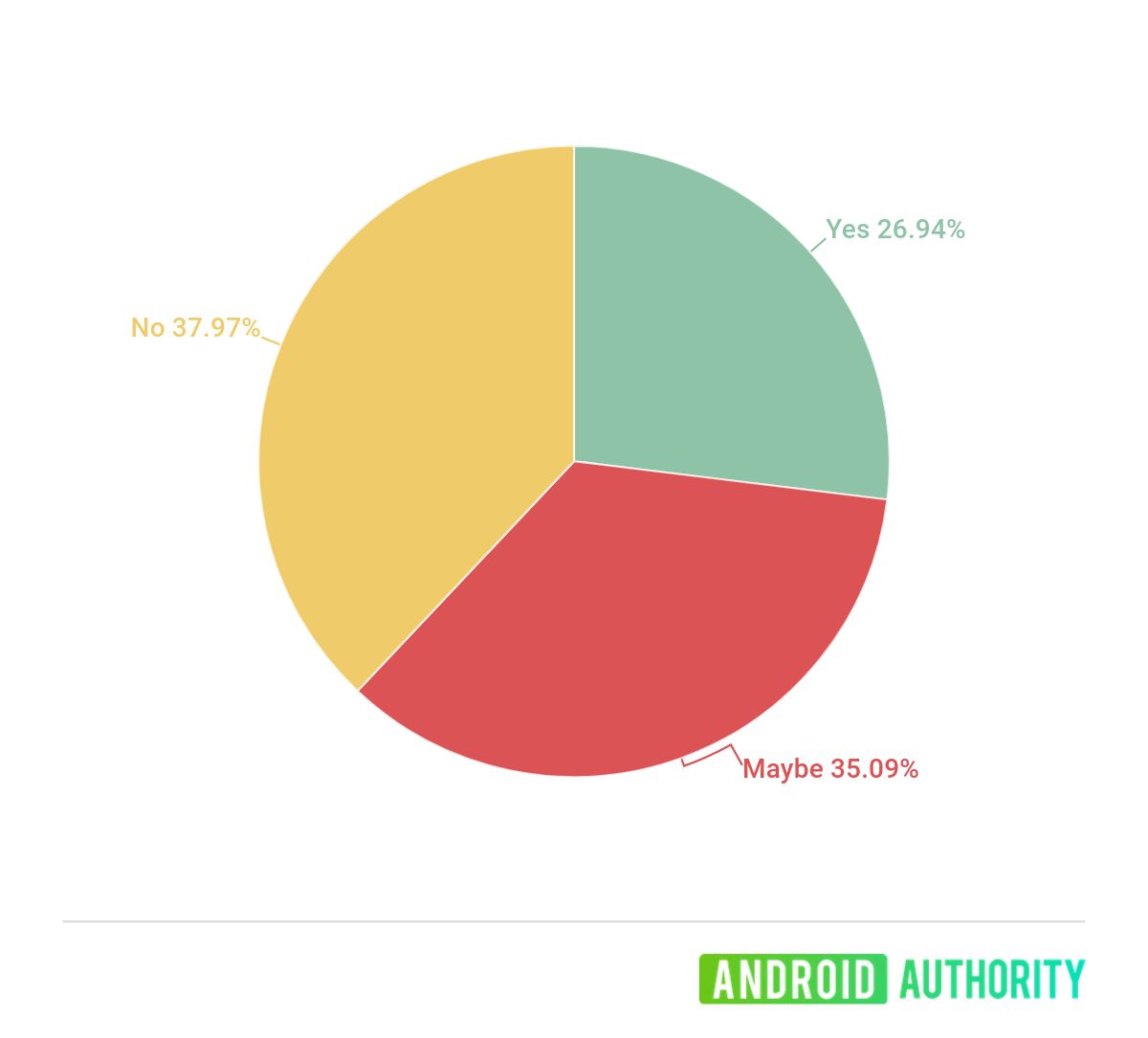
How good are the cameras on the Galaxy Note 20 phones?
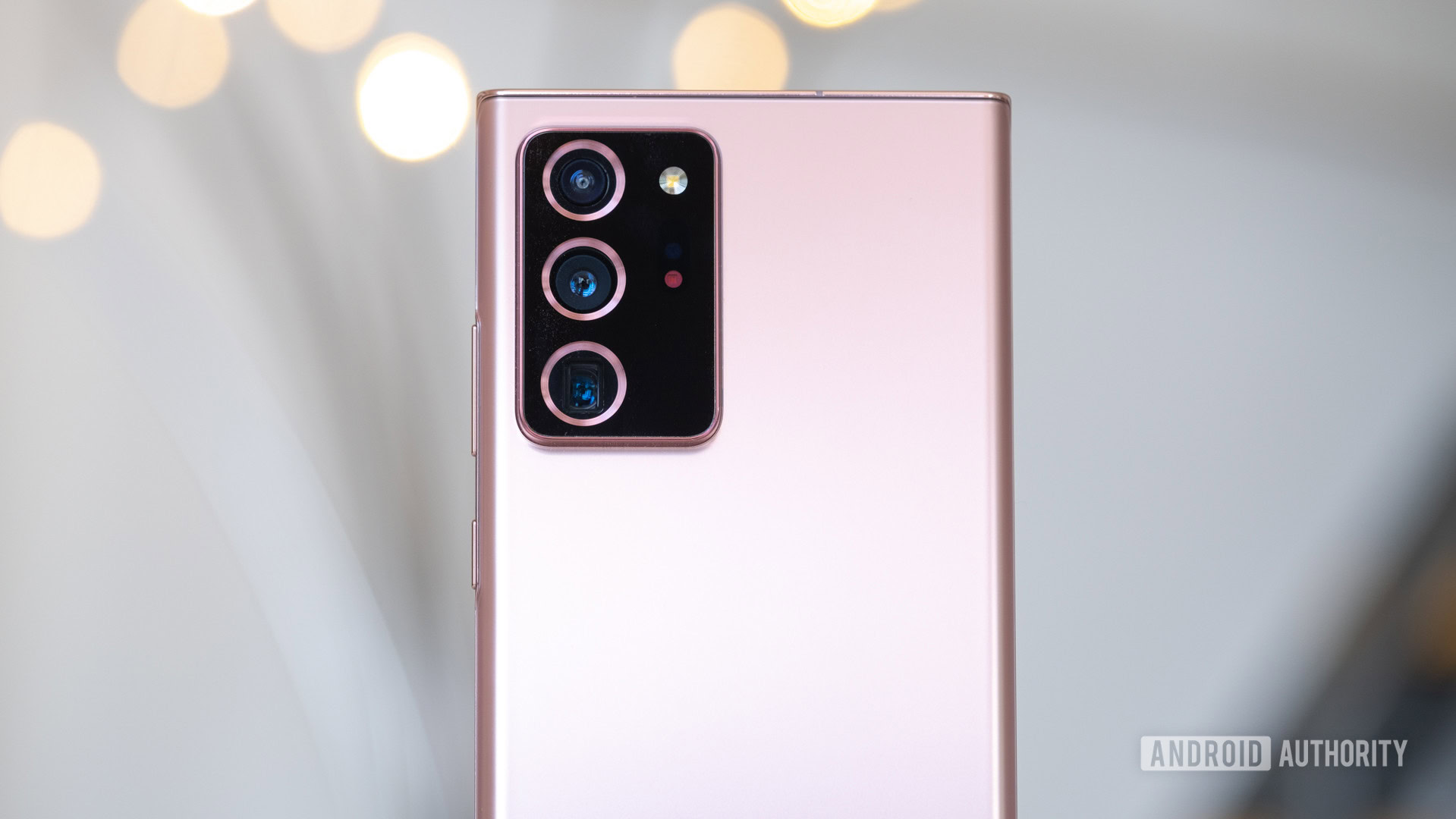
The Galaxy Note 20 Ultra sports three cameras at the back. The standard lens boasts a 108MP sensor, though by default it shoots binned 12MP images. It is joined by an ultra-wide-angle 12MP camera, and a 5x optical telephoto 12MP camera. The setup is capable of 50x zoom and 8K video capture. The selfie camera comes in at 10MP.
The Note 20 Ultra has sharp cameras, although the images come out slightly oversaturated.
According to David who reviewed the phone, most standard daytime shots taken with the main sensor look excellent. They are slightly oversaturated, which can either be a good or a bad thing depending on your preference. The white balance has been corrected when compared to the S20 Ultra; it’s now more natural-looking. Focus has been improved as well thanks to the added dedicated laser focusing tool.
The telephoto lens is also great, offering 5X optical zoom. It also supports 50x hybrid zoom, although that’s more of a gimmick than a useful tool. David also liked the wide-angle shooter, saying that it has more or less the same color profile as the other two lenses.
Overall, the rear cameras of the Galaxy Note 20 Ultra are much improved over those of the S20 series, though they don’t quite match Google’s Pixel 4 and Pixel 5.
To see exactly how the cameras of the device perform, check out all of our full-quality Galaxy Note 20 Ultra review camera samples in this Google Drive folder.
The regular Note 20 comes with a main 12MP shooter, a 64MP telephoto lens, and the same 12MP ultra-wide camera. Despite the bump down, we were still impressed with the results. It’s a capable and versatile shooter, even if it doesn’t have the incredible zoom lenses of Samsung’s Ultra phones. You can see our photo samples in this Google Drive folder.
Do the Galaxy Note 20 phones have good battery life?
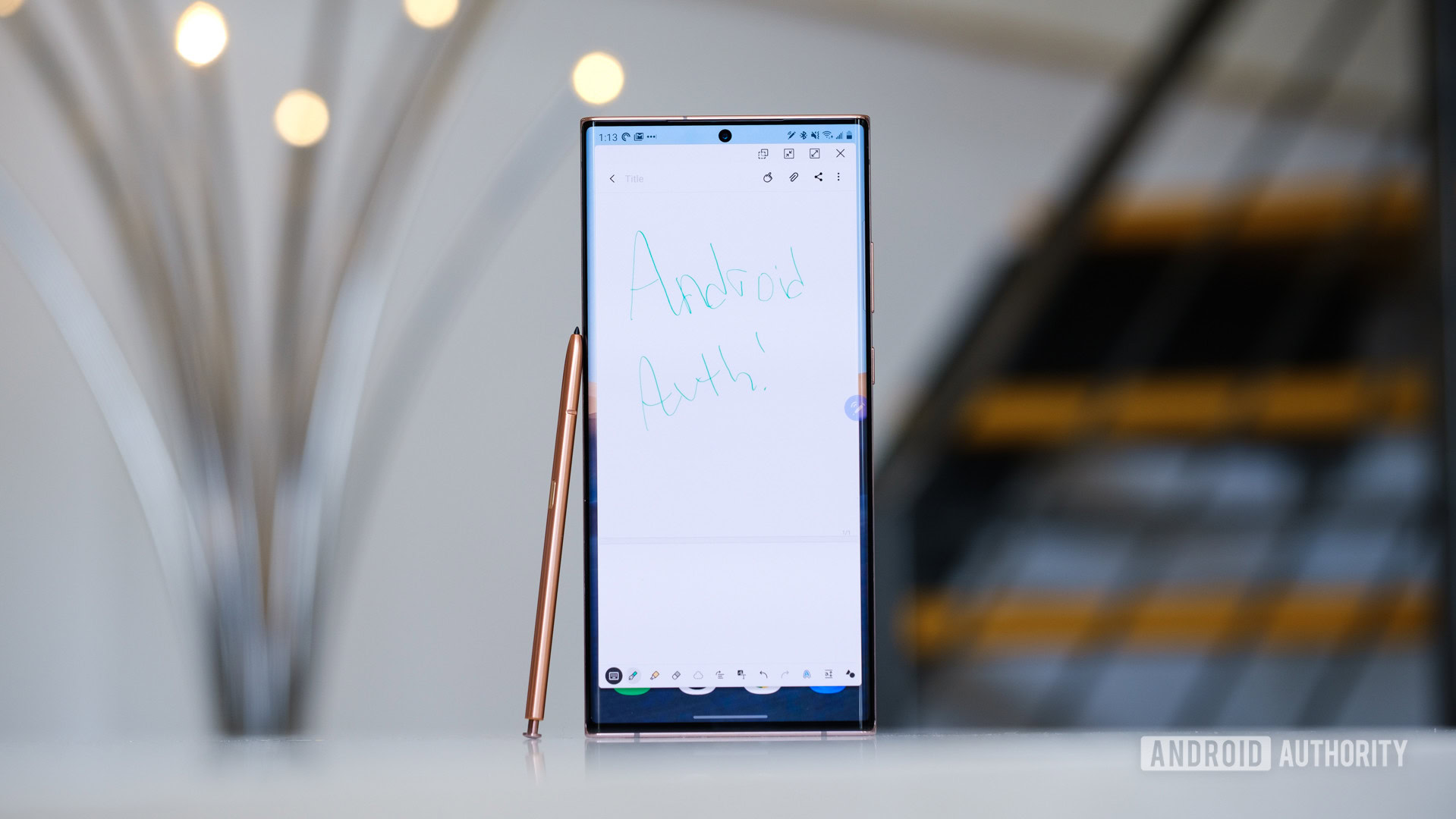
The battery life of the Galaxy Note 20 Ultra is good, but not impressive. The phone packs a 4,500mAh cell, making it 200mAh larger than that of last year’s Note 10 Plus and 500mAh smaller compared to the battery of the S20 Ultra.
During his testing, the battery was able to get David through the day, achieving around seven hours of screen-on time. That result is somewhere in the middle of the pack. You can extend the screen-on time for about an hour if you set the refresh rate to 60Hz, although you’ll be missing out on all those smooth animations the 120Hz display provides.
The Note 20 Ultra's battery goes from zero to full in about 71 minutes.
On the charging front, you’re looking at some straightforward options. The Note 20 Ultra supports 25W charging and ships with a 25W charger. Charge times were good. 15 minutes on the charger netted a 31% charge, while 30 minutes reached 58% and 60 minutes reached 92%. It took just over 71 minutes to get the battery from zero to full. This is a solid result, although far from market-leading.
Wireless charging is capped at 15W, so expect to see slower top-up speeds, and reverse wireless charging is limited to 4.5W.
The Galaxy Note 20, on the other hand, comes with a slightly smaller 4,300mAh battery. Regardless, we expected it to offer a similar battery life if not better, considering it has a smaller display with a lower resolution and refresh rate. In practice, this translated to about seven hours of screen-on time, which is about the same as the Ultra. That’s not bad, but certainly not great for the price.
Just like the Ultra model, the phone supports 25W charging, 15W wireless charging, and 4.5W reverse wireless charging.
How does the Note 20 compare to the Note 10?
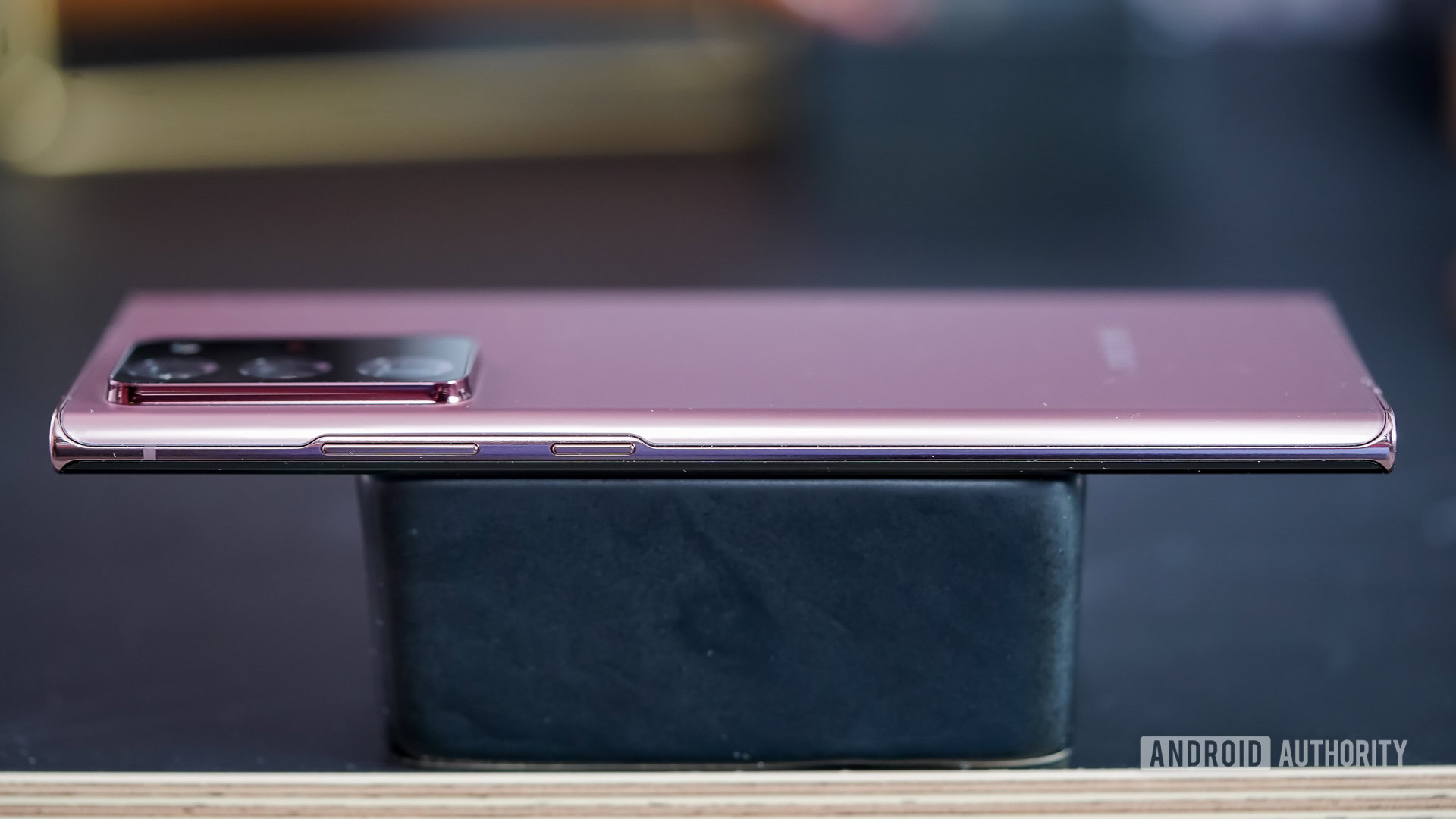
What’s new in Note 20 Ultra compared to Note 10 Plus? Plenty. First, the display. Last year’s 10 Plus boasted a 6.8-inch Infinity-O display with 3,040 x 1,440 pixels, HDR10+, and 498ppi. The Note 20 Ultra has an updated 6.9-inch display with a 120Hz refresh rate. The Note 10’s screen had a 60Hz panel. This means the Note 20 Ultra will deliver a much smoother experience to end-users. It’s a gamer’s dream.
The processor is a generational leap. One of the biggest criticisms of the Note 10 Plus is that it went with the standard Snapdragon 855 processor and not the 855 Plus. Samsung didn’t make the same mistake twice. The Note 20 jumps to the Snapdragon 865 Plus, which is a significant boost in terms of raw processing power. Samsung is keeping RAM and storage configurations about the same.
The battery improves by about 200mAh. If you’re concerned that’s not enough, Samsung insists the efficiency of the 865 Plus, in addition to new power management techniques, gives it all the go it needs.
What about the cameras? Well, we’re looking at two different systems. The biggest change is the increase in pixel count for the Note 20 Ultra, which jumps to 108MP. The massive increase in main camera sensor resolution should give the Note 20 Ultra a leg up, as should its IR focusing system. The newer phones can shoot 8K video, where last year’s Note 10 was stuck at 4K.
In the good news department, it looks as though Samsung rectified the power button issue by moving the screen lock/power button back to the right edge of the phone. You won’t find a Bixby button on board.
What’s the difference between Note 20 and Note 20 Ultra?
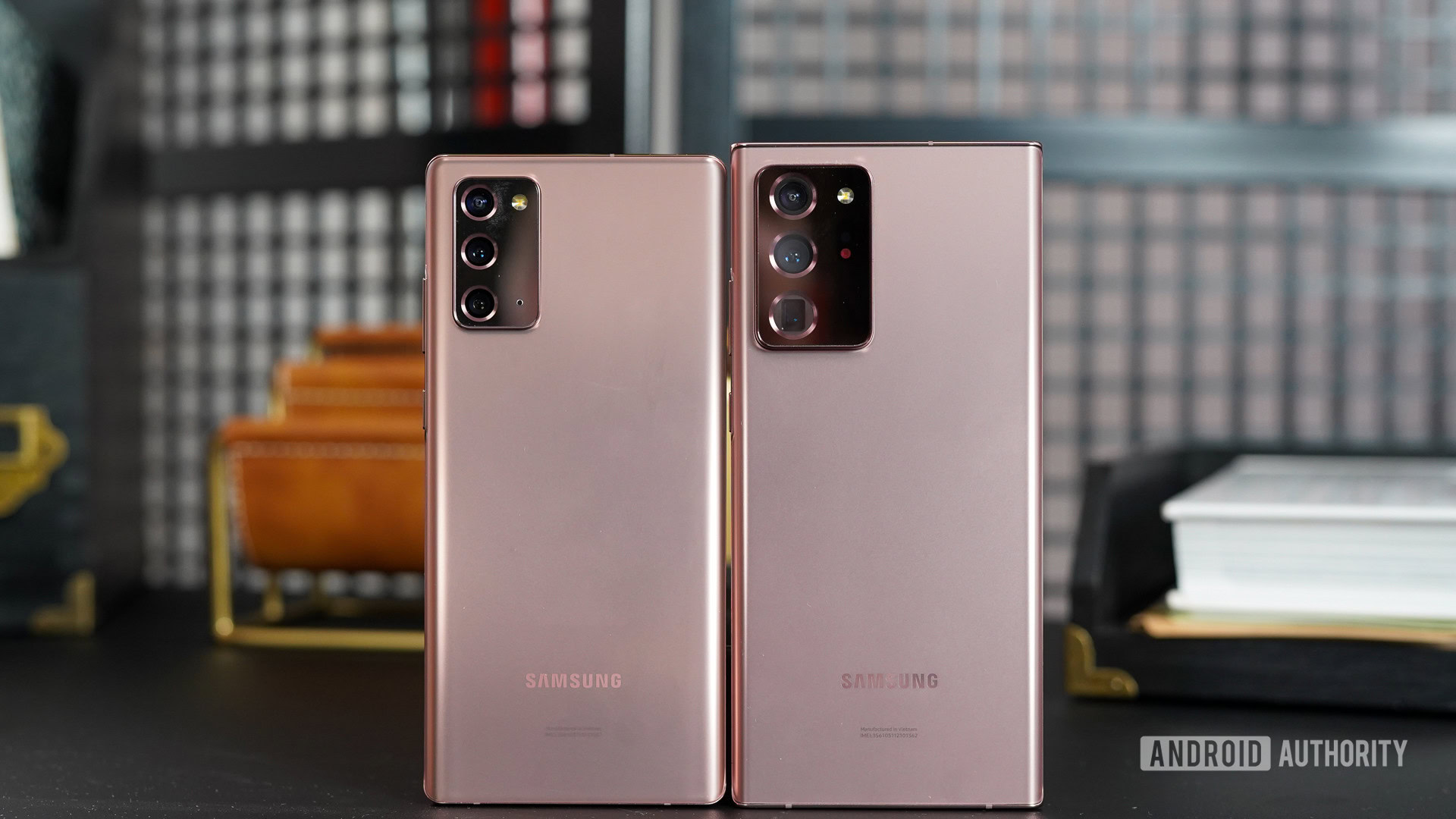
It’s not all about the size. There are surprising differences between this year’s two Note 20 siblings that ought to give you pause. What’s in that $300 price differential? Quite a lot.
Let’s start with the screen. Where the Note 20 Ultra has a 6.9-inch WQHD+ display at 120Hz with a bit of a curve, while the Note 20 drops down to a flat 6.7-inch Full HD+ screen at 60Hz. These are disappointing changes. Moreover, they come in different aspect ratios: 19.3:9 for the Note 20 Ultra, 20:9 for the Note 20. Samsung didn’t say why the aspect ratios aren’t the same.
The phones share the same chipset — some markets are stuck with Samsung’s own Exynos processor — but RAM and storage differ. The Note 20 Ultra offers a hefty 12GB/512GB option, but the Note 20 is limited to 8GB/128GB. We found that 8GB of RAM is plenty to run a modern Android phone, but that extra 4GB certainly helps, particularly when gaming. Worse, the larger Ultra includes microSD expansion and the smaller Note 20 does not.
The Ultra has a bigger battery, better cameras, a microSD card slot, and a glass back.
The batteries are only slightly different, at 4,300mAh in the smaller phone and 4,500mAh in the larger one. Given the difference in screen size, resolution, and refresh rate, the smaller phone will likely put up better battery life numbers.
The cameras are also different. Where the Note 20 Ultra has a 108MP, 12MP, and 12MP arrangement, the Note 2o has a 12MP, 64MP, 12MP setup. The saving grace for the Note 20 here is that its 12MP shooter has much bigger pixels: 1.8µm compared to 0.8µm. Both share the same 10MP selfie camera and can capture cinema mode 8K video at 24fps.
Then there’s the glasstic. The larger Note 20 Ultra is a glass sandwich, with Gorilla Glass on both sides and aluminum in between. In a stunning move, Samsung has downgraded the regular Note 20’s rear panel to glasstic, or a plastic material with a glass-like paint job. Sure, this could make the phone more durable, but I don’t like the idea of paying a grand for a phone with a plastic back.
Last, the UWB feature. Using proximity and other sensors, the Note 20 Ultra will be able to do two things the Note 20 cannot: act as a digital key with certain front-door locks and send files to other phones in a blink. Samsung did not provide a reason for this discrepancy in features.
What are some good Note 20 alternatives?
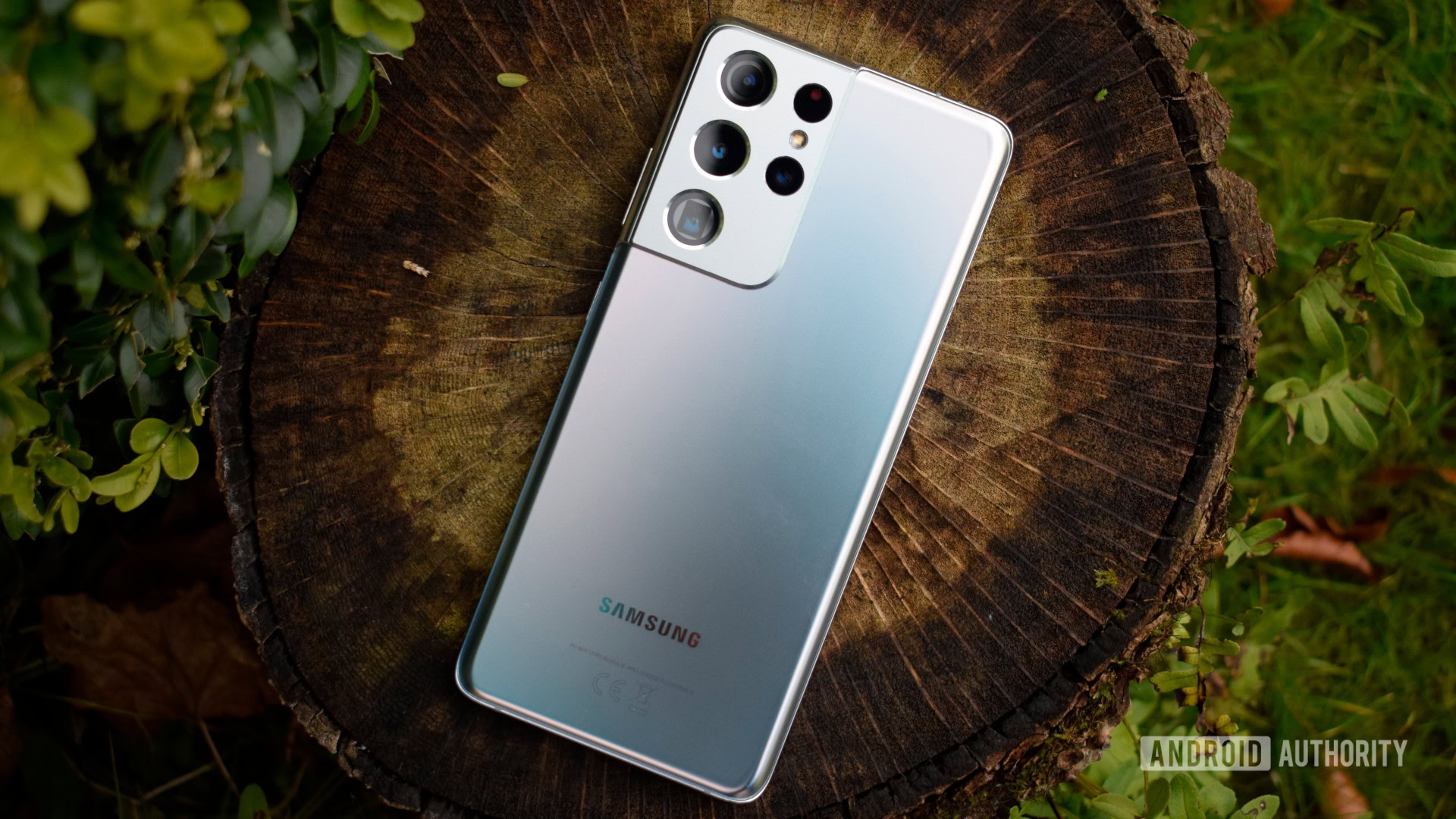
Let’s say you dig the Note 20 and all, but you’re not down with the price or the S Pen and want something similar. You have options, my friend.
If it’s the S Pen you don’t care for, the Galaxy S21 or S21 Plus are the obvious options. Then there’s the S21 Ultra, which also doesn’t come with a stylus in the box, but it does support it. Last year’s Galaxy S20 series is also worth taking a look at.
The V60 comes with an optional secondary display.
If you’re looking for nothing other than a large screen, the LG V60 might work. Not only is it more affordable, but it also comes with an optional secondary display. You might want to act quickly though because LG is no longer in the phone business so supplies are limited. That means great prices, but little support going forward.
The OnePlus 9 Pro offers similar performance to the V60 but goes in a different direction in terms of design and software. OnePlus made a compelling phone with a gorgeous screen that can serve as a media powerhouse. Its software is much cleaner than either LG’s or Samsung’s, however, and that is reason enough to take a look at the OnePlus 9 Pro.
Read next: Samsung Galaxy Note 20 vs Galaxy S20 series
If you don’t mind going off the beaten path a bit, the Xiaomi Mi 11 is an excellent handset. And it’s cheaper, too. Then there’s the Mi 11 Pro and Mi 11 Ultra, although they are a bit harder to find at the moment.
The Note 20 and Note 20 Ultra replace last year’s Note 10 and Note 10 Plus. If the latest specs don’t concern you, the Note 10 series is now available at bargain prices. More importantly, we found it can still go toe-to-toe with many 2020 flagships.
Last, if you’re not sure you’re an Android lover, Apple’s oversized iPhone 13 Pro Max offers power, battery, and photography chops to spare.
You can learn more about these devices in our dedicated Samsung Galaxy Note 20 alternatives post at the link.
Known Galaxy Note 20 issues
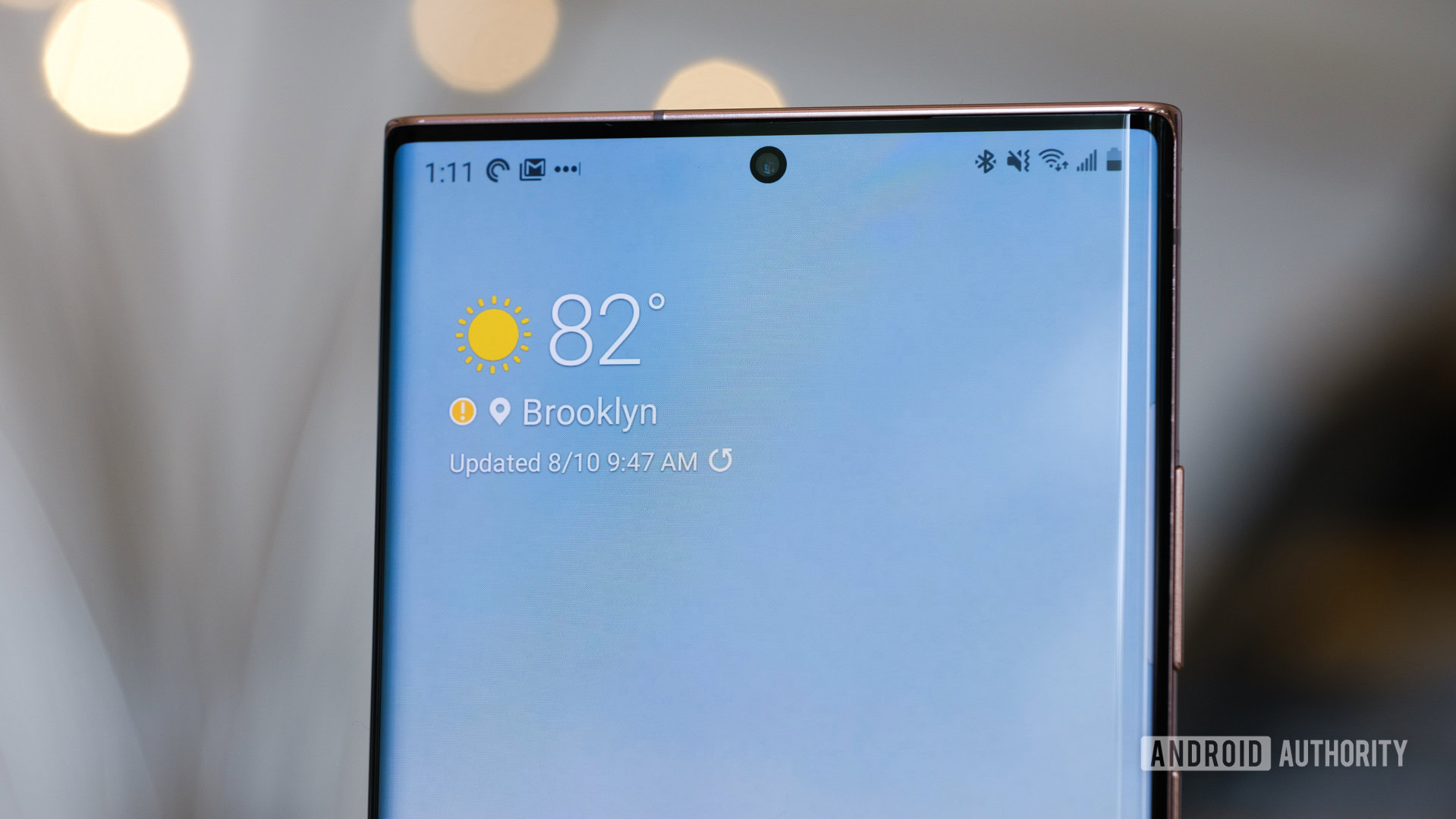
The Note 20 phones are experiencing the same issue as the Galaxy S20 Ultra, as well as many other Samsung devices in the past. Owners have been complaining that the displays of their devices are tinting green.
The issue is usually caused by lowering the brightness of the display beyond a certain threshold. It’s most noticeable when the screen is displaying something with a gray background. The issue was reported by owners of both the Exynos and Snapdragon variants of the Note 20 phones.
Screen tinting at low brightness settings is inherent to all OLED displays, regardless of the manufacturer. However, there’s a good chance that Samsung may end up trying to lessen the tinting with a software update.
Other than the tinting issue, we haven’t heard about any other major problems with the Galaxy Note 20 phones so far. We’ll be sure to update this section if we do.
Read more in our Note 20 troubleshooting guide.
Samsung Galaxy Note 20 software updates
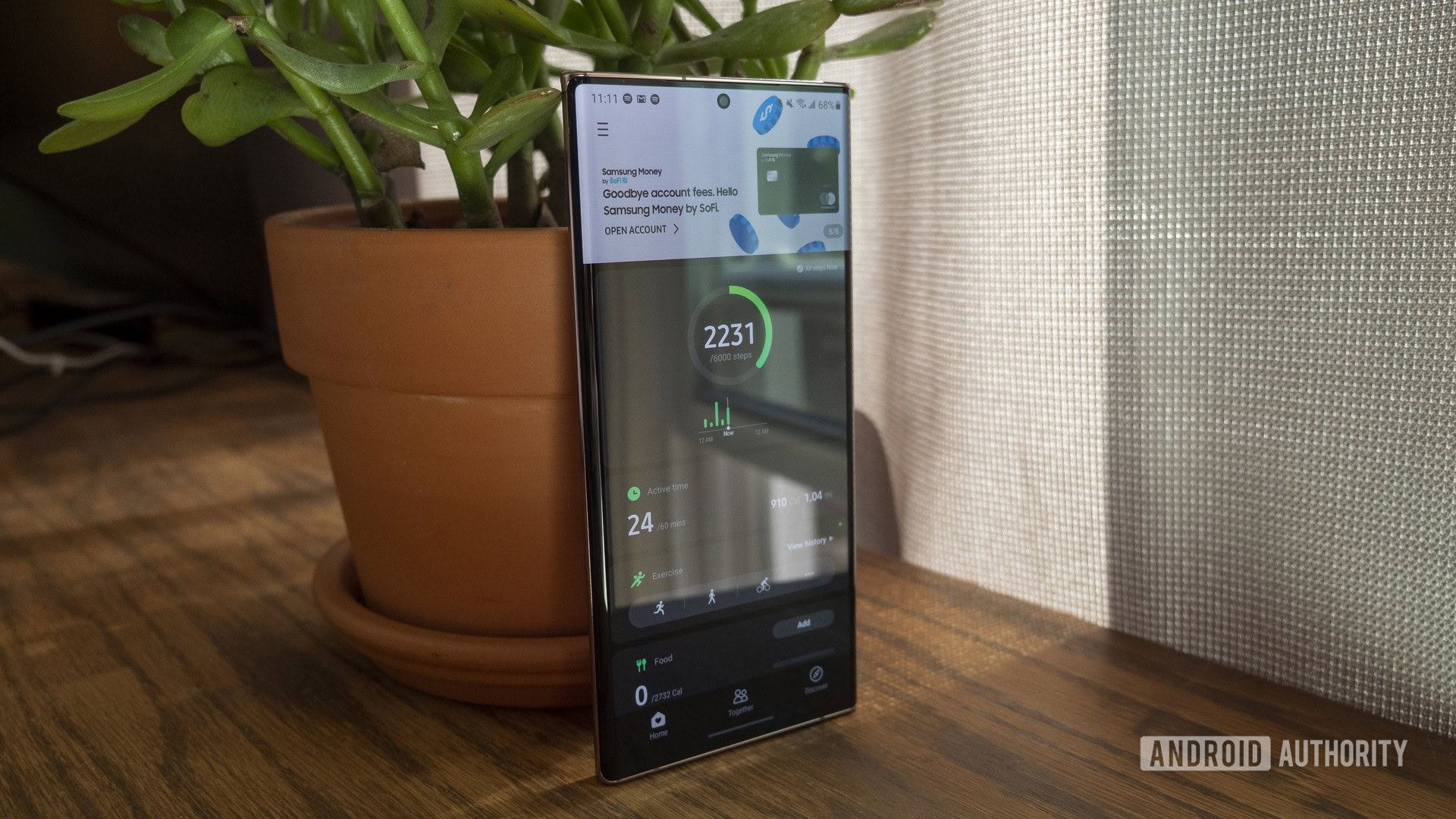
Samsung usually sends out frequent updates to its flagship phones. It released an update for the Galaxy Note 20 devices before they even hit the shelves. The first software update brought stability and performance improvements. It also squashed some bugs and added new features, but Samsung didn’t go into the details in the changelog. The update was almost 500MB in size and carried the August security patches for the phones.
The Note 20 series is guaranteed to get three major Android updates.
The great thing about the Note 20 phones is that Samsung promised that they will both get three major Android versions, so you’re all set till Android 13.
As far as speed goes, Samsung has improved over the years, but it’s not the fastest one. However, it has already shipped out Android 11 to the unlocked versions of the Note 20 devices. Carriers in the US have rolled out the update as well — learn more here. Even though Samsung has already rolled Android 12 to its Galaxy S21 series, the Note 20 series continues to lag behind, so we may not see Android 12 until 2022.
Google, OnePlus, and Nokia are usually faster with updates, but a lot of other companies are much slower.
You can read more about current and planned updates for the Galaxy Note 20 family here.
Galaxy Note 20 cases and other accessories
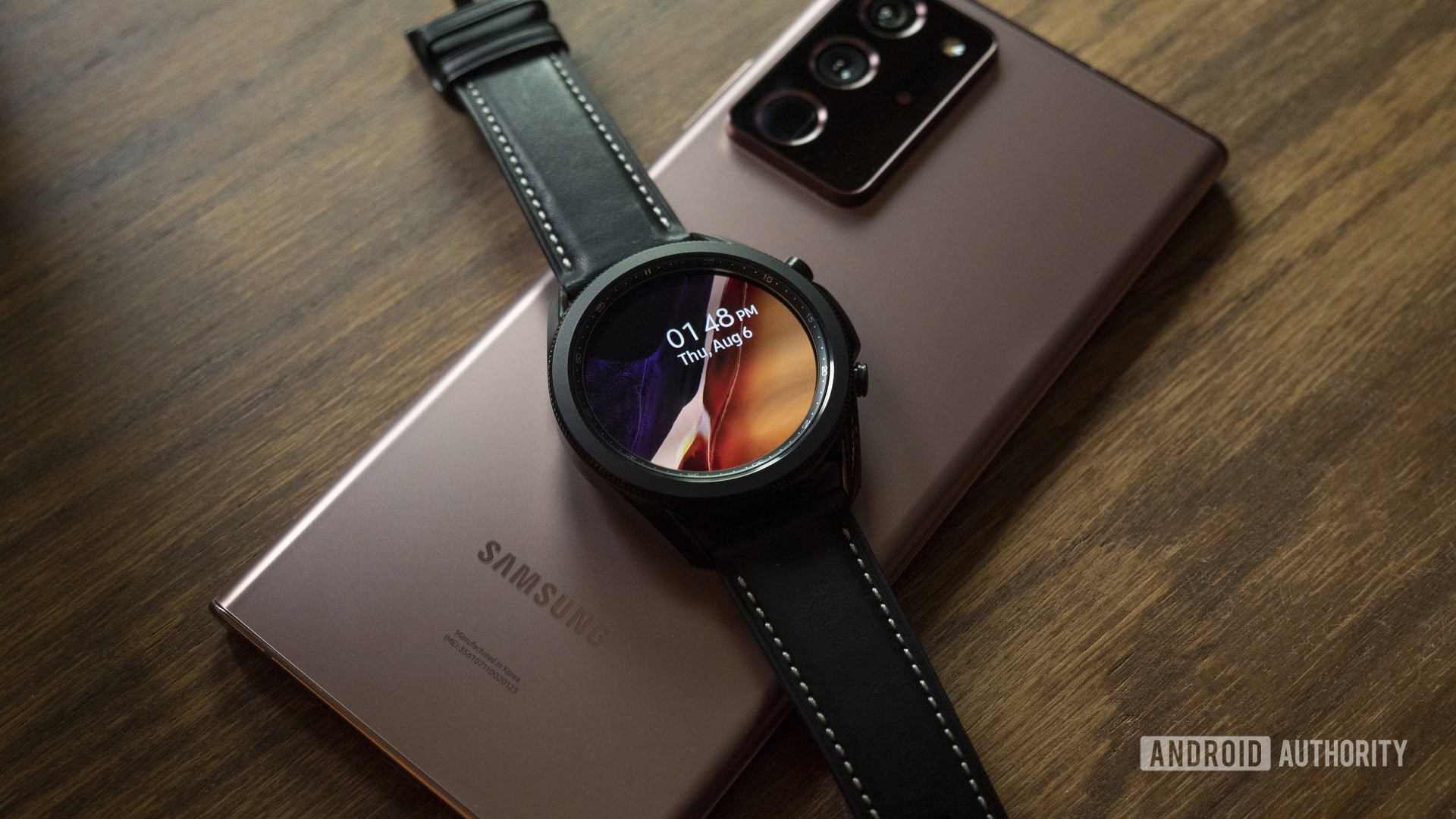
The Galaxy Note 20 phones are expensive, so investing in a case that will protect them from bumps and bruises is a good idea. You can check out our roundup of the best ones below.
Neither of the Galaxy Note 20 phones has a headphone jack, so the best option is to opt for a pair of Bluetooth headphones. You have plenty to choose from, including the company’s Galaxy Buds Pro and the newer Galaxy Buds 2.
If you’re into smartwatches, Samsung’s new Galaxy Watch 4 goes nicely with a Note 20 phone. But if you don’t like it for whatever reason, there are plenty of alternatives available, which you can check out in our best smartwatches post at the link.
We also recommend getting a power bank for your Galaxy Note 20. The battery life of the phones is decent, but not class-leading. A power bank will make sure you don’t run out of juice while out and about. To check out the best ones we recommend, click here.
Top Samsung Galaxy Note 20 questions
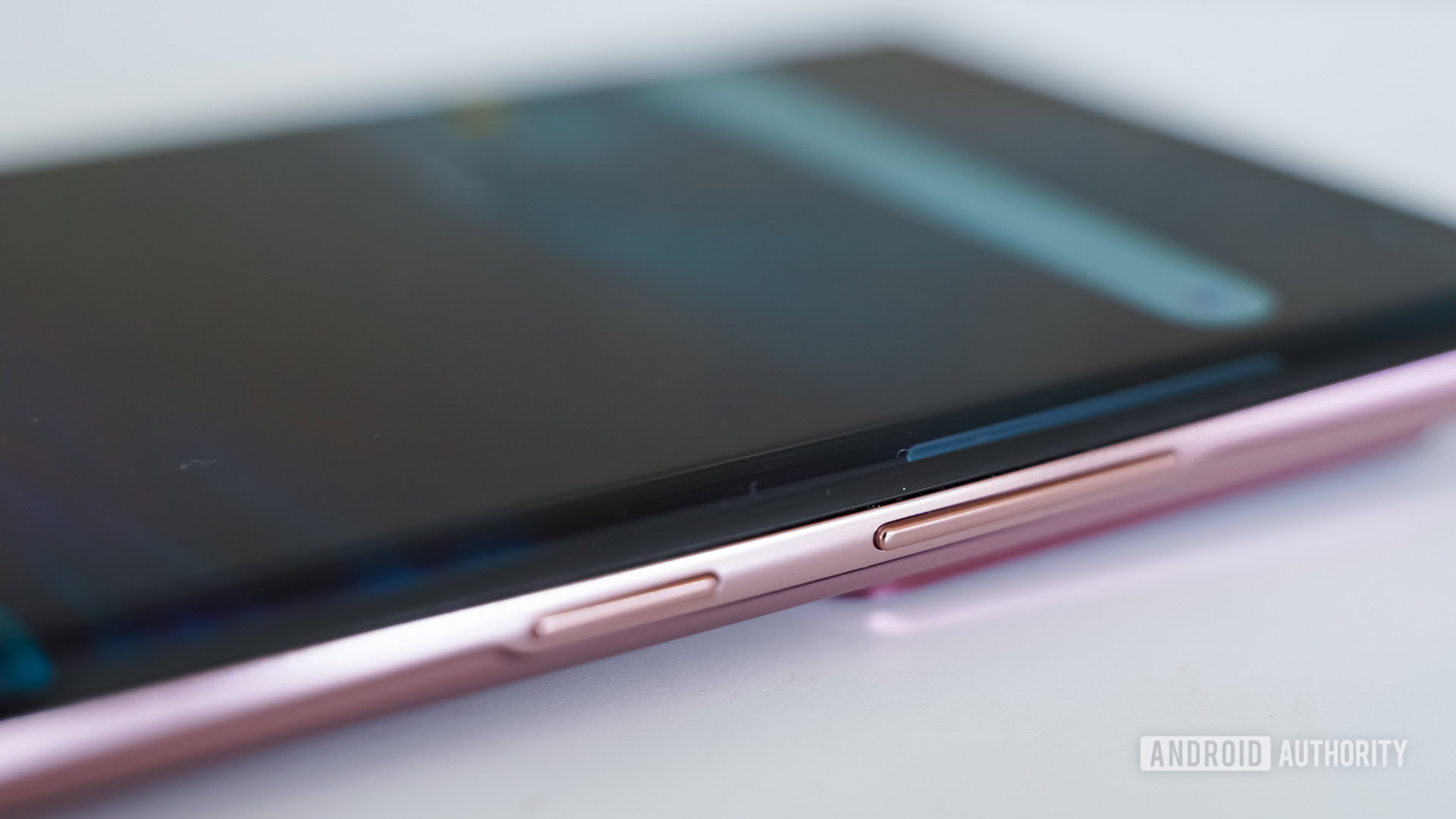
Q: Which Galaxy Note 20 should I buy?
A: Despite being more expensive, we think the Galaxy Note 20 Ultra is the better deal. It’s hard to recommend the regular Note 20 at $1,000 since it has a plastic back and lacks many features you get with the Ultra and other phones in this price range.
Q: Do the Galaxy Note 20 phones have a headphone jack?
A: No, neither the Galaxy Note 20 nor the Note 20 Ultra have a headphone jack.
Q: Do the Galaxy Note 20 handsets have a microSD slot?
A: The Galaxy Note 20 Ultra has a microSD slot, but the Galaxy Note 20 does not. Samsung didn’t account for this difference, but it likely comes down to the size and more power-user feel of the Ultra.
Q: Do the Galaxy Note 20 phones come with earbuds?
A: No, they do not come with earbuds in the box.
Q: Are the Samsung Galaxy Note 20 phones waterproof?
A: Yes, both devices are IP68 rated, which means they can be submerged in up to 1.5m (five feet) of water for a maximum of 30 mins.
Q: Which Galaxy Note 20 phone has a 120Hz display?
A: The Samsung Galaxy Note 20 Ultra. But the refresh rate is variable, meaning it varies from as low as 11Hz when you’re viewing a web page, to 24Hz when you’re watching a movie, to 120Hz for gaming. The refresh rate can’t be set to 120Hz at all times. The Galaxy Note 20, on the other hand, only has a 60Hz display.
Q: What chipset powers the Galaxy Note 20 and 20 Ultra?
A: In most global markets, the Galaxy Note 20 phones are powered by Samsung’s Exynos 990 chipset. The handsets come with the Snapdragon 865 Plus chipset under the hood in the US and a few other countries.
Q: Is there a dedicated Bixby button on the Note 20 phones?
A: No, you won’t find a dedicated Bixby button on either device.
Q: Do both phones have a curved display?
A: No, only the Galaxy Note 20 Ultra has a curved display.
Q: What is this glasstic thing I keep hearing so much about?
A: Glasstic is what Samsung calls the glossy plastic back of the Note 20. It’s a bit controversial because using plastic on a phone that costs $1,000 gives off a cheap vibe.
Q: What colors do the Galaxy Note 20 phone come in?
A: The Galaxy Note 20 Ultra comes in Mystic Black, Mystic White, and Mystic Bronze. The Galaxy Note 20 comes in Mystic Black, Mystic Green, and Mystic Bronze. Samsung says the bronze color is its signature look for the two phones.
Where to buy the Samsung Galaxy Note 20 phones?
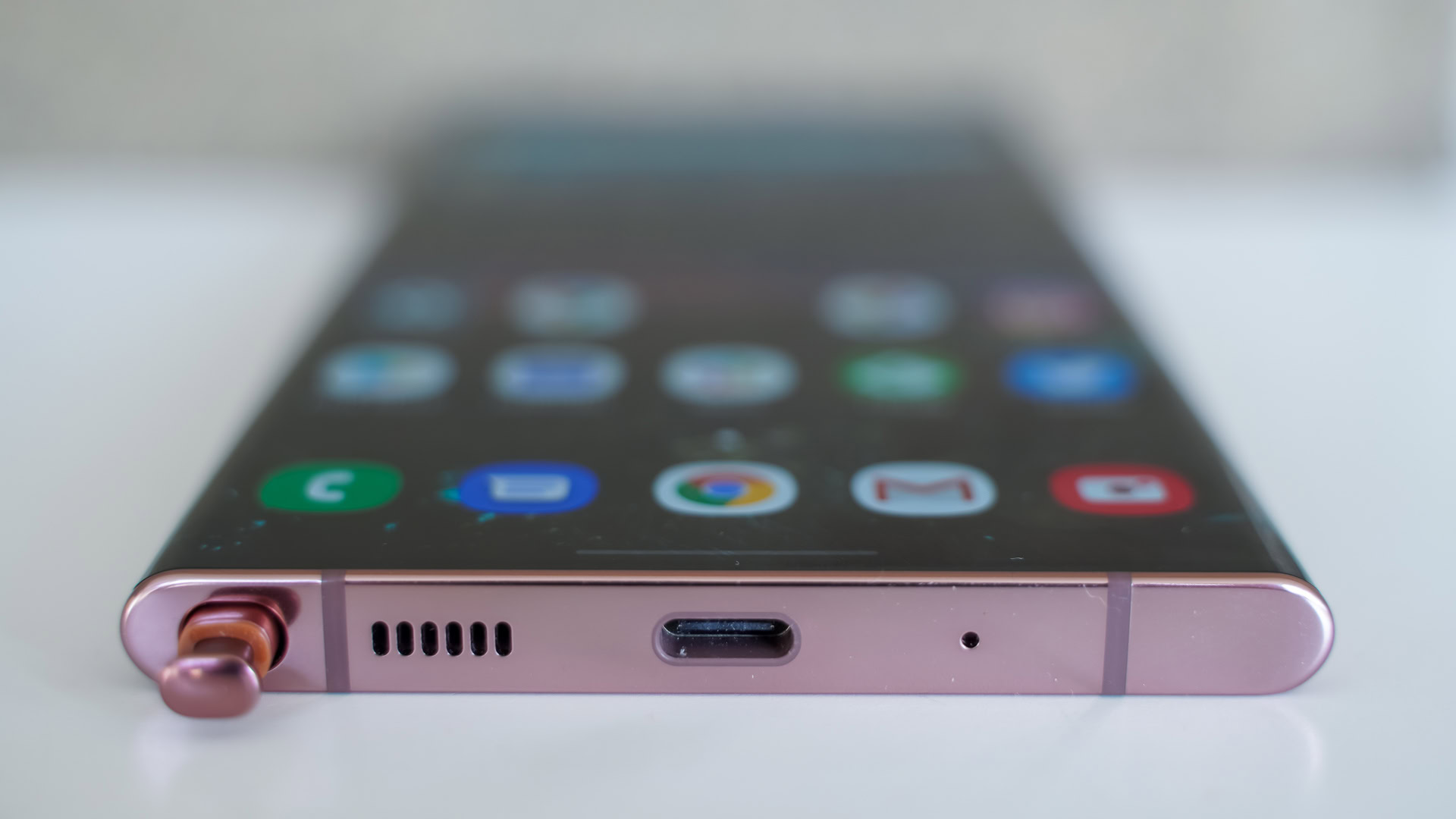
USA
- Get them directly from Samsung
- Buy the unlocked versions on Amazon
- Get them at AT&T
- Get them at T-Mobile
- Get them at Verizon
UK
India
Samsung Galaxy Note 20 and 20 Ultra specs
| Samsung Galaxy Note 20 | Samsung Galaxy Note 20 Ultra | |
|---|---|---|
Display | Samsung Galaxy Note 20 6.7-inch AMOLED Infinity-O FHD+ resolution 20:9 aspect ratio 60Hz refresh rate | Samsung Galaxy Note 20 Ultra 6.9-inch AMOLED Infinity-O WQHD+ resolution 19.3:9 aspect ratio 120Hz refresh rate |
Construction | Samsung Galaxy Note 20 Plastic (aka Glasstic) body Flat display Gorilla Glass 5 display cover | Samsung Galaxy Note 20 Ultra Metal and glass body Curved (Edge) display Gorilla Glass 7 display cover |
CPU | Samsung Galaxy Note 20 NA: Qualcomm Snapdragon 865 Plus Global: Samsung Exynos 990 | Samsung Galaxy Note 20 Ultra NA: Qualcomm Snapdragon 865 Plus Global: Samsung Exynos 990 |
Storage | Samsung Galaxy Note 20 NA: 128GB internal No microSD card support Global: 256GB internal No microSD card support | Samsung Galaxy Note 20 Ultra NA: 128GB or 512GB internal microSD card support up to 2TB Global: 256GB or 512GB internal microSD card support up to 2TB |
RAM | Samsung Galaxy Note 20 8GB LPDDR5 | Samsung Galaxy Note 20 Ultra 12GB LPDDR5 |
Power | Samsung Galaxy Note 20 4,300mAh battery 25W wired charging 15W wireless charging 4.5W reverse wireless charging | Samsung Galaxy Note 20 Ultra 4,500mAh battery 25W wired charging 15W wireless charging 4.5W reverse wireless charging |
Cameras | Samsung Galaxy Note 20 Rear: 12MP 2PD OIS wide-angle (ƒ/1.8, 1.8μm) 64MP telephoto (ƒ/2.0, 0.8μm, hybrid 3x zoom) 12MP ultra-wide (ƒ/2.2, 1.4μm) Front: 10MP 2PD AF (ƒ/2.2, 1.22μm) | Samsung Galaxy Note 20 Ultra Rear: 108MP PD OIS wide-angle (ƒ/1.8, 0.8μm) 12MP telephoto (ƒ/3.0, 1.0μm, optical 5x zoom) 12MP ultra-wide (ƒ/2.2, 1.4μm) Laser AF Front: 10MP 2PD AF (ƒ/2.2, 1.22μm) |
Video | Samsung Galaxy Note 20 8K at 24fps in 16x9 or 21:9 | Samsung Galaxy Note 20 Ultra 8K at 24fps in 16x9 or 21:9 |
Security | Samsung Galaxy Note 20 In-display fingerprint sensor Ultrasonic technology | Samsung Galaxy Note 20 Ultra In-display fingerprint sensor Ultrasonic technology |
Durability | Samsung Galaxy Note 20 IP68 certified | Samsung Galaxy Note 20 Ultra IP68 certified |
Connectivity | Samsung Galaxy Note 20 5G (separate sub-6GHz and mmWave models) Wi-Fi 6 4G only model available in selected markets | Samsung Galaxy Note 20 Ultra 5G (sub-6GHz and mmWave) Wi-Fi 6 |
Colors | Samsung Galaxy Note 20 Mystic Gray Mystic Green Mystic Bronze | Samsung Galaxy Note 20 Ultra Mystic Black Mystic White Mystic Bronze |
Dimensions & weight | Samsung Galaxy Note 20 75.2 x 161.6 x 8.3mm 192g (sub-6GHz only) 194g (mmWave supported) | Samsung Galaxy Note 20 Ultra 77.2 x 164.8 x 8.1mm 208g |
Help other readers out
